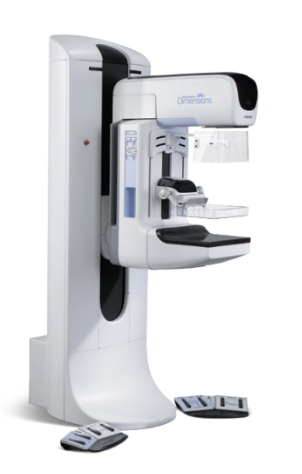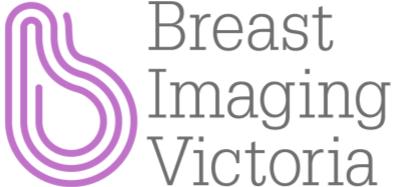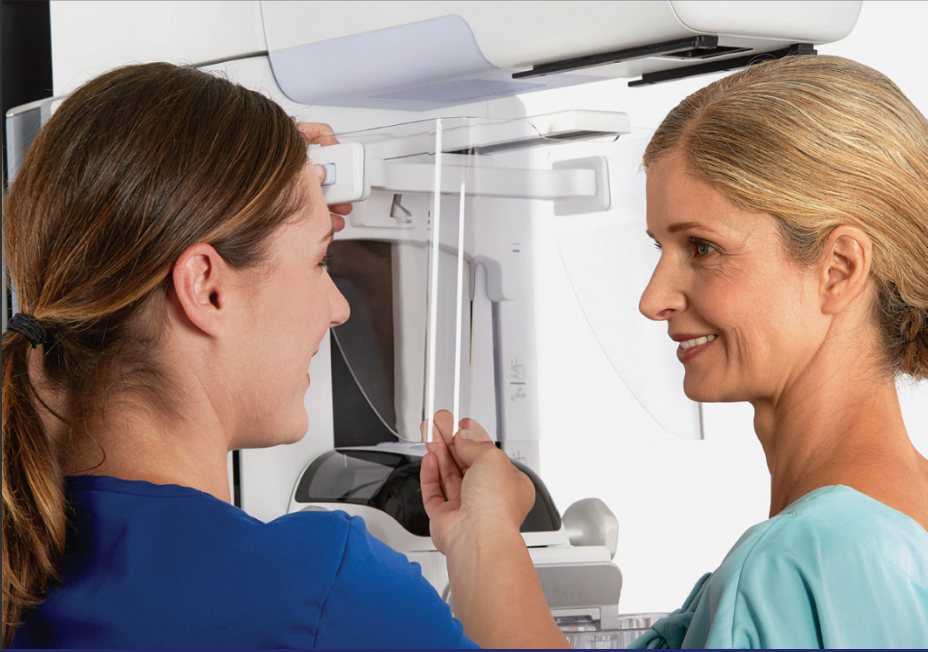Stereotactic Breast Biopsy
What you should know
Your doctor has recommended you have a breast biopsy to collect a small sample of tissue that will be sent to pathology for testing and diagnosis. This procedure requires minimal preparation and recovery time. Our facility offers advanced breast imaging and minimally invasive X-ray breast biopsy options. Our breast biopsy technology allows your doctor to locate and biopsy small or subtle areas of interest.
Before your procedure
In advance of your biopsy procedure, you should inform your doctor of any medications and vitamins you are currently taking – either prescription or over-the-counter. Your doctor may advise you to stop taking certain medications prior to your scheduled biopsy. You may also be advised to wear loose clothing for comfort and not to wear deodorant or perfume.
Most patients are able to eat and drink normally and perform their typical daily activities before arriving for their breast biopsy.
During your procedure
After you have been positioned for your biopsy – either seated or lying on your side – the radiologist will take images of your breast to determine the location of the suspicious area to be biopsied by your doctor. Your skin will be cleansed with sterilising solution and numbed with anaesthetic. Sometimes, a very small skin nick is made to help the biopsy needle enter the breast with ease.
Typically, multiple tissue samples will be collected through a single incision. A final set of images may then be taken to verify that the intended tissue was collected. Your doctor may place a small marker (smaller than a grain of rice) at the biopsy site for future reference to identify the exact location of the biopsy. The marker is made of a metallic alloy (i.e. titanium, stainless steel) and you will not be able to feel or notice the marker after placement.
After your procedure
Pressure will be applied to your breast for a few minutes. A small bandage will be placed over the skin nick, and you may be given an ice pack to apply to the biopsy site. In some instances, a compression wrap bandage may be placed around your chest to minimise chances of swelling or bruising. Your doctor may prescribe a non-aspirin pain reliever to help
alleviate any possible discomfort. Instructions will also be provided on how to care for the biopsied area. Most women can resume normal daily activities soon following their procedure. You will be given further guidance on this during your procedure visit.Your doctor will contact you after receiving your biopsy results and let you know if any follow-up care
is required.
About interventional radiology
This is a subspecialty of radiology in which minimally invasive procedures are performed using image guidance and biopsy needles. Images provide road maps to guide the doctor as he or she directs the needles to the area(s)
of interest.

FAQs
Q: How much of the breast tissue or lump will be removed?
A: Only a small sampling of tissue from the suspicious area will be taken.
Q: How long will the biopsy take?
A: Biopsy times vary depending on each patient’s situation. Typically, the total time in the doctor’s office for a biopsy is around 30-45 minutes from the time you enter the exam room until you leave. The actual procedure to locate and collect the tissue samples is about 10 minutes. This includes the time it takes for the doctor to remove tissue, which is usually less than one minute.
Q: Will I experience any pain during the procedure?
A: Each patient is different, but you might feel a slight sting or pinch when the anaesthetic is first being administered to your breast. Numbing the breast prior to the biopsy is designed to make the rest of the procedure as comfortable as possible.
Q: How will I feel after the procedure?
A: Your breast may be slightly tender and you may experience some bruising at the biopsy site. Typically, most women can resume many of their normal activities the same day as the procedure. Your doctor will advise you of post-biopsy
procedure care.
Q: How quickly will I receive the results? And what could they mean?
A: Our facility understands the anxiety patients feel about having a breast biopsy. So we will do everything possible to make sure your results are read quickly.
What to expect
Your biopsy will typically consist of the following steps:
- Your breast will be compressed similar to a mammogram.
- Imaging of your breast will be taken to identify the biopsy area.
- Your breast will be numbed with an anaesthetic.
- A needle will be inserted into your breast to retrieve small tissue samples.
- Your doctor may take additional images of the area.
- A small titanium marker may possibly be placed in the biopsy site to help identify the area in future exams.
Innovative technology
Most women recalled for assessment, including breast biopsies, are found not to have breast cancer.¹ Doctors agree that early detection is key. If breast cancer is found early, before spreading to the lymph nodes, the five-year survival rate for Stage 1 (early) breast cancer is, on average, 100% and Stage 2 is 95%.²
Our facility is proud to use some of the most advanced technologies available, including the breast biopsy system by Hologic - a worldwide leader in digital mammography.
For more information visit: hologic.com.au
This brochure is designed to assist Australian healthcare professionals when consulting with patients who are undergoing a breast biopsy. It is designed to help women make an informed decision in consultation with their doctor.
References:
- AIHW BreastScreen Australia monitoring report 2011-2012, Cancer Series No.86.
- Breast Cancer Statistics in Australia | NBCF. Accessed July 2025


